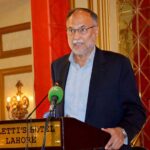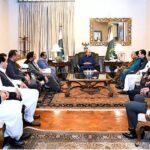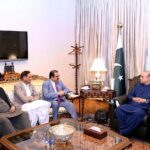WASHINGTON, Feb 1 (APP): Pakistan has developed something in
recent years: a burgeoning middle class that is fueling economic growth and bolstering a fragile democracy.
The transformation is evident in Jamil Abbas, a tailor of
women’s clothing whose 15 years of work has paid off with two children in a private school and small luxuries like a refrigerator and a washing machine.
According to a report published in Wall Street Journal, for
companies like the Swiss food maker Nestlé SA, such hungry consumers signal a sea change.
“Pakistan is entering the hot zone,” said Bruno Olierhoek,
Nestlé’s CEO for Pakistan, saying the country appears to be at a
tipping point of exploding demand. Nestlé’s sales in Pakistan have doubled in the past five years to $1 billion.
Although often overshadowed by giant neighbors India and
China, Pakistan is the sixth most populated country, with 200
million people. And now, major progress in the country’s security, economic and political environments have helped create the stability for a thriving middle class.
An unpublished study last year that measured living standards,
from Pakistani market research firm Aftab Associates, found that 38% of the country is middle class, while a further 4% is upper class. That’s a combined 84 million people roughly equivalent to the entire populations of Germany or Turkey.
Such households are likely to have a motorcycle, color TV,
refrigerator, washing machine and at least one member who has completed school up to the age of 16, the study found.
Official figures show that the proportion of households that
own a motorcycle soared to 34% in 2014 from 4% in 1991, and a washing machine to 47% from 13% over that same period. These trends are also attracting international business.
Last month, Royal FrieslandCampina NV, a Dutch dairy company,
paid $461 million to buy control of Engro Foods, a Pakistani packaged milk producer in a country where most milk is sold unpasteurized from open milk containers.
“What we see is consumer spending is rising and a middle class
coming up,” said Hans Laarakker, Engro’s new chief executive.
Late last year, China’s Shanghai Electric Power agreed to pay
$1.8 billion for a majority of Karachi’s electric supply company;
Turkish electrical appliance maker Arçelik paid $258 million for a Pakistani appliance maker, Dawlance, saying Pakistan has an “increasingly prosperous working and middle class”; and French car maker Renault SA said it was seeking to set up a plant in Pakistan.
Meanwhile, during the past three years, deaths from terrorist
attacks have fallen by two thirds, as the army battles terrorists.
Economic growth reached an eight year high of nearly 5% in the
past financial year, and China has begun a multibillion dollar infrastructure investment program. The Karachi stock market rose 46% last year and continues to soar.
The 2013 election marked the first democratic transition from
one elected government to another.
Sharif formed the government, appealing to a business
constituency with his focus on private sector led economic growth.
Pakistan experienced a “staggering fall” in poverty in recent
years, halving it to 29.5% of the population.
90% of the increase in national consumption came from the
middle class, found a study by Jawaid Ghani, a professor at the
Karachi School for Business and Leadership.
The living standards of the middle class in Pakistan and other
developing nations is modest by Western standards, and there’s no agreed or official definition.
A study by the Organization for Economic Cooperation and
Development forecasts that the bulk of the growth in the middle
class in the years ahead will come from Asia, which will account for two thirds of the global middle class by 2030.
In the developing world, the ability to purchase durable goods
such as motorcycles which itself can lead to new opportunities in employment, education and leisure is generally viewed as an indicator of a middle class lifestyle.
Motorcycle purchases soared in Pakistan to 2 million a year
now from 95,000 in 2000, leading Honda Motor Co. to double its production capacity there.
Buyers of Honda’s cheapest motorcycle typically earn between
just $200 and $300 a month, which gives them disposable income.
“All these big companies globally, if they’re not looking at
Pakistan, need to look at Pakistan, because it’s a huge consumption
economy emerging,” said Saquib Shirazi, chief executive of Honda’s
Pakistan joint venture.
At his tailor shop, run from a basement on the outskirts of
the capital Islamabad, 39 year old Abbas makes $350 a month from a business that employs four other people.
That’s enough to rent a two room home and buy a motorcycle 18
months ago that cut his commute to work from two hours to 30 minutes.
“I’m sure there are many others like me who are trying to work
hard and improve their lives,” Abbas said.
Pakistan’s middle class soars as stability returns





